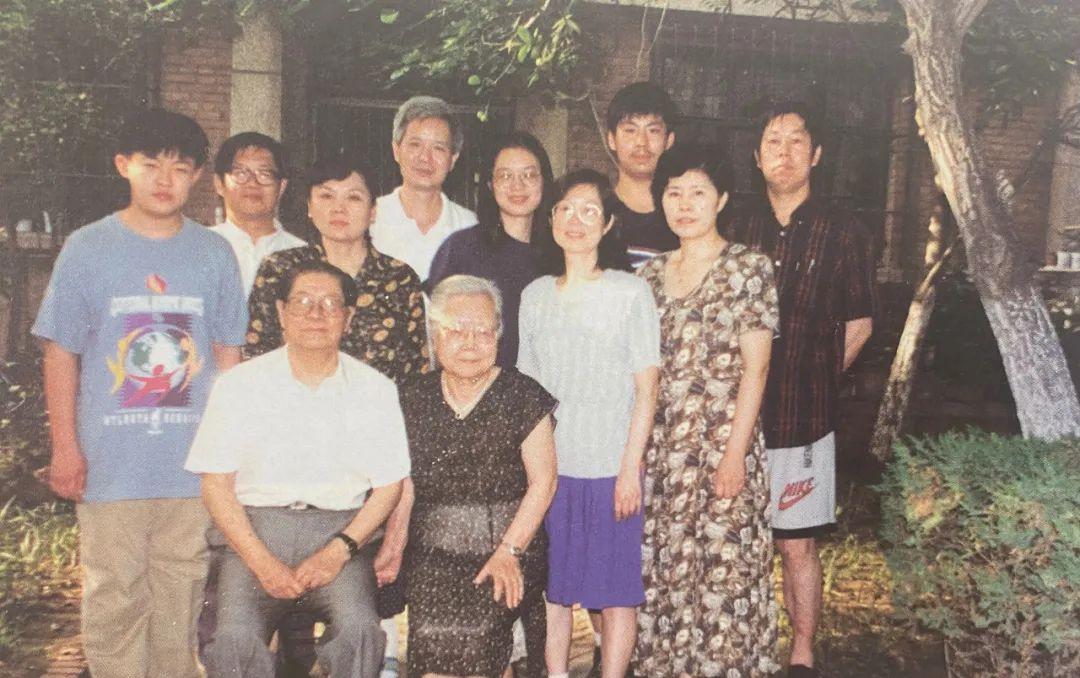Lu Baolin (1916.6.19 - 2004.9), a native of Changshu, Jiangsu Province. Medical entomologist. The most prominent achievements are the study of insect classification in the Chinese mosquito family and the management practice of vector mosquitoes.
Since the establishment of Suzhou Scientist Day on July 10, 2020, Suzhou has honored talents in the name of a city.
Today, "Science Popularization Suzhou" will continue to bring you the Suzhou Academician Series. From the story of Suzhou academicians, read Suzhou.
01.
In 1928, Lu Baolin studied at the Affiliated Middle School of Soochow University and aspired to engage in biological science research. In 1934, he was admitted to the Department of Biology of the Faculty of Science of Soochow University and received a bachelor of science degree. In his junior year, he wrote a report on "Freshwater Birds in Suzhou", which was praised by his teacher Liu Chengzhao. In his senior year, due to the outbreak of the Anti-Japanese War, he was borrowed from the Biology Department of West China University. In 1938, he became a specimen collector in the Department of Biology of West China University. In the following year, he studied entomology at the Graduate School of the Department of Biology of Tsinghua University, and under the guidance of the famous entomologist Liu Chongle, he conducted research on aquatic insect ecology and obtained a master's degree in science.

In 1988, Lu Baolin took a family portrait
After graduation, Lu Baolin worked at the Institute of Agriculture of Tsinghua University, and began to study mosquitoes. At that time, the malaria epidemic in southwest Yunnan was extremely serious, and he conducted a three-year investigation of Anopheles mosquitoes in Kunming and proved that Anopheles sinensis was the local malaria vector. In 1944, he went to Hubei Medical College to teach. Since 1946, he has been a lecturer in the Department of Entomology, College of Agriculture, Peking University. Since 1949, he has been a lecturer and associate professor in the Department of Entomology of Beijing Agricultural University. In 1951, he participated in the research group organized by the Central Epidemic Prevention Committee, attended the investigation team of the International Association of Democratic Lawyers and the International Scientific Committee, and demonstrated to international friends the fact that the United States airdropped insects to carry out germ warfare.
In 1952, he was transferred to the insect room of the Department of Parasitology of the Institute of Microbiology and Epidemiology of the newly established Academy of Military Medical Sciences, specializing in mosquito research. Since then, he has successively served as the deputy director and associate researcher of the research office, the director of the research office, and the researcher. From the 1950s to the early 1960s, he participated in the prevention and control of malaria and filariasis in southwest China and East China, as well as the natural source of scrub worm disease and leptospirosis. Since 1974, he has been entrusted by the Chinese Academy of Sciences to preside over the research of mosquito fauna in China, and edited the "Chinese Mosquito Family". In 1980, he served as an editorial board member of the Chinese Academy of Sciences", and was elected as a member (academician) of the Faculty of Biology of the Chinese Academy of Sciences. In 1981, he was a member of the Joint Group on Vector Control in Environmental Governance of the World Health Organization, the Food and Agriculture Organization of the United Nations and the United Nations Environment Programme, and a member of the Medical Science and Technology Committee of the Ministry of Health of the General Logistics Department.
Since 192, he has successively served as the chairman of the Entomological Society of China and the vice chairman of the Malaria Special Group of the Special Committee on Vector Biology and Control of the Medical Science and Technology Committee of the Ministry of Health. In 1984, he became an adjunct professor of parasitology at the Fourth Military Medical University. In 1986, he was appointed deputy director of the Plaster People's Liberation Army Preventive Medicine Center. In 1987, he was appointed as a member of the Expert Advisory Committee on Parasitic Diseases of the Ministry of Health and an honorary director of the Entomological Society of China. In 1989, he was appointed as a consultant to the Preventive Medicine Advisory Group of the Ministry of Health of the General Logistics Department and an honorary member of the Society of Vector Biology and Control of the Chinese Preventive Medicine Association.
Lu visited the Entomology Laboratory of the University of Florida in the United States; in 2003, Lu baolin talked with Gubler, director of the CDC's Institute of Insect-Borne Infectious Diseases
02.
Lu Baolin has long studied the taxonomic fauna, ecological habits, disease transmission relationship and comprehensive management of mosquitoes in China. He has presided over two national collaborative projects, "Aedes albopictus and Aedes aegypti and their control", "comprehensive control of mosquito breeding in rice fields", "medical protection of special weapons injuries in wartime", and research on the comprehensive control of Aedes aegypti on Hainan Island. He has won the special prize of the National Science and Technology Progress Award, the first prize of the National Patriotic Health Campaign Committee and the Science and Technology Progress Award of the Ministry of Health. In 1999, he was awarded the Ho Leung Ho Lee Foundation Science and Technology Progress Award. He is the chief editor of "Medical Entomology", "Handbook of Identification of Important Medical Animals in China", "Classification and Identification of Important Medical Insects in China" and other works.
END
Article source: "Suzhou Academician"
Image: Network
EDIT: Wen Knife
Popular Science Suzhou
ID: kepusuzhou
Popular Science Suzhou Q3: 948033090